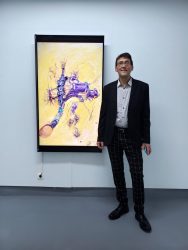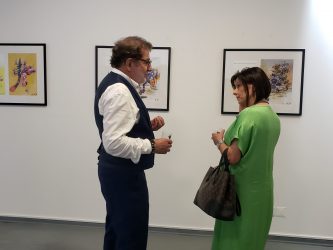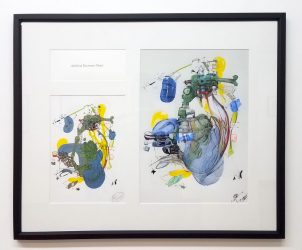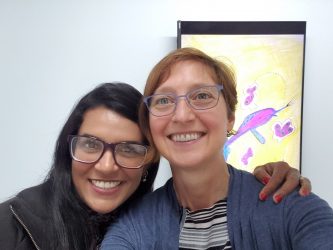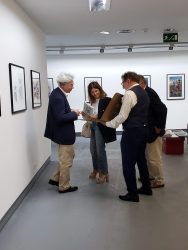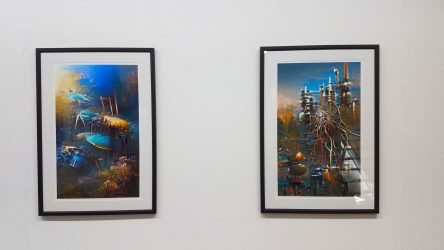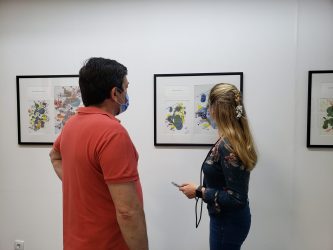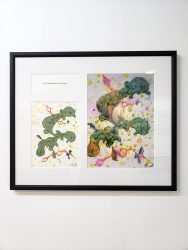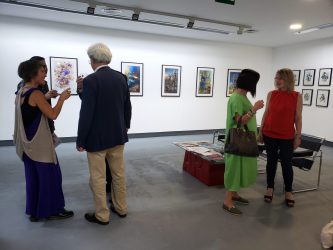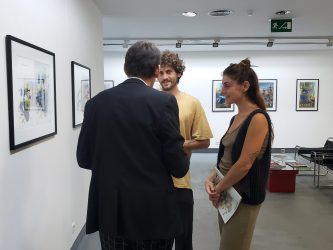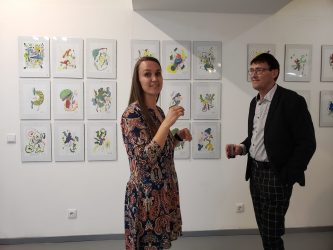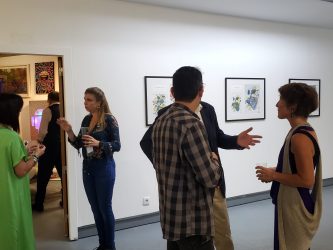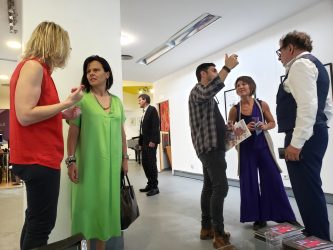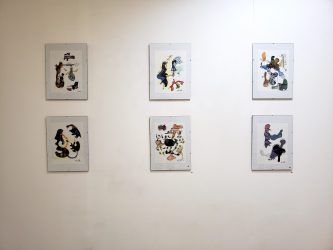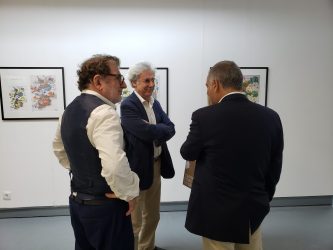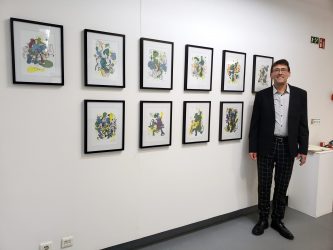Synthetic Evolution
The Synthetic Evolution series merges human creativity with artificial intelligence, using advanced algorithms to transform and evolve my hand-drawn visual forms, patterns, and imagery into entirely new experimental compositions. These AI-driven processes generate unexpected variations, reinterpreting and expanding upon my original drawings in ways that push the boundaries of traditional artistic expression. Through this fusion of human intuition and machine intelligence, the series explores the intersection of organic and synthetic creativity, resulting in both static works and dynamic moving image pieces that continually shift, morph, and reimagine themselves in real time.
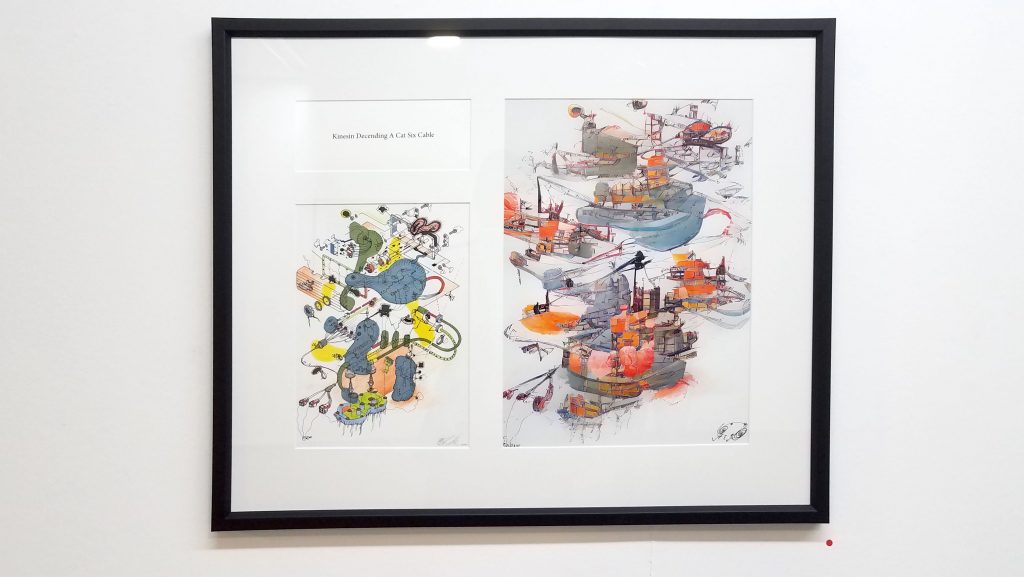
These hand-drawn works are closely connected to my robotic generative artworks. In my interactive installations, I integrate motors, sensors, circuit designs, and custom programming to build large-scale robotic systems. As I work with machine diagrams and technical schematics, I have discovered an unexpected aesthetic—one that merges mechanical precision with organic flow. My original drawings serve as training sets for AI-generated works, blending machine diagrams with biological forms to suggest movement, function, and interconnectedness.
For the Synthetic Evolution exhibition, I defined a set of rules and parameters based on my hand-drawn works, using them as training data sets for artificial intelligence engines. These datasets are merged with large language models, enabling AI to generate new visual compositions derived from my original drawings. Because my works are abstract and open to interpretation, the AI-generated variations maintain this quality—yielding experimental and suggestive forms. The algorithm produces numerous iterations, and I curate the most compelling results to refine and evolve further.
This process is repeated hundreds of times until I find a piece that best captures the balance between my hand-drawn art and AI’s generative interpretation. At this stage, I enhance the digital work by adding color and adjusting form before finalizing the piece. Once completed, I incorporate these works into a video program, showcasing the transformation from original drawing to AI-generated evolution. AI-generated sound further amplifies the experience, allowing viewers to witness the unfolding of this digital evolution in real time.
Synthetic evolution using AI in visual art is an exciting and rapidly growing field, and I am exploring its potential to create new forms of expression that may challenge traditional notions of creativity and authorship. By combining the power of artificial intelligence with my vision and intuition, synthetic evolution has the potential to lead to new forms of art that blur the boundaries between human and machine-generated creativity.
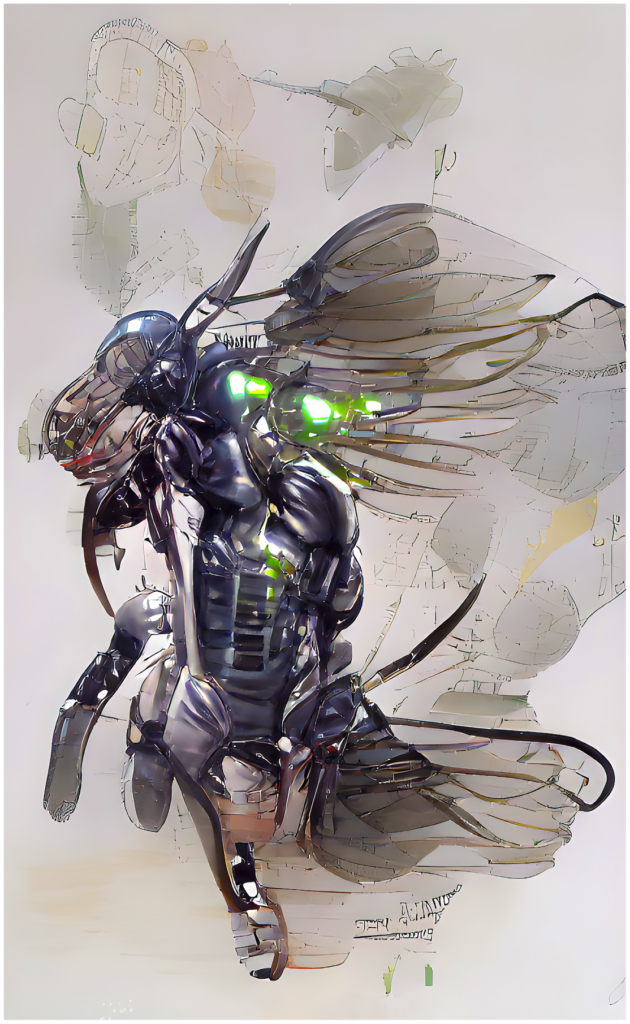
Artificial intelligence tools powered by machine learning are revolutionizing both the arts and sciences, reshaping the way we create, discover, and innovate. One of the most groundbreaking advancements is AlphaFold, which has demonstrated an unprecedented ability to predict highly accurate 3D models of protein structures. This breakthrough has the potential to transform the field of biology, accelerating drug discovery, medical research, and our understanding of life at a molecular level. While DNA has long served as the slow but effective mechanism of evolution for all species, AI has now emerged as a powerful accelerant—reshaping not only how we evolve biologically but also how we interact with and adapt to our rapidly changing world.
In the realm of art, AI tools have become widely accessible, allowing for seamless remixing, reinterpretation, and transformation of cultural expressions. With this democratization of creative technology, culture itself feels like it is igniting—metaphorically and literally—as the boundaries between human and machine-made art blur, and the pace of artistic evolution accelerates at an unprecedented rate.
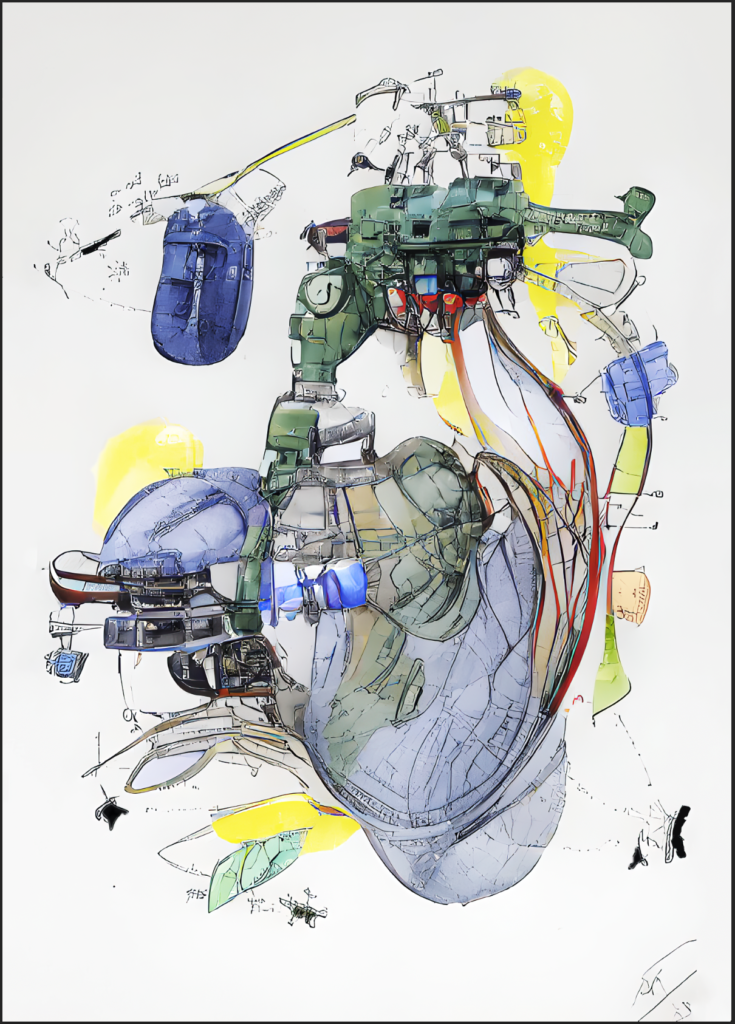
So how do artists support the coming AI, neural network, and big-data art boom? We learn the tools and the technology and engage in the process of remixing. Suppose the artist cares not for the tools we have.

In that case, we develop new AI algorithms, processes, and techniques. I strongly believe that we must misuse the tools and push the boundaries of these tools—often designed for commercial purposes—by repurposing them in ways that expand our imagination, and challenge the dialogue surrounding AI art aesthetics. If we use the tools as intended we end up with the same images everybody is mindlessly creating using AI with simple word prompts.
While we may not have personally chosen the technologies we engage with, as artists, we shape them just as they shape us. These tools are not only creating and evolving alongside us but also redefining the way we perceive, interact with, and express creativity.
The Synthetic Evolution exhibition deconstructs and reinterprets existing hand-drawn works, using them as training sets for AI. This process allows the AI to further evolve and mutate these images, generating new iterations informed by additional key words inspired by the original drawings. These words act as guiding parameters, steering the AI’s algorithmic creativity and influencing the emergence of entirely new generative works derived from the original data
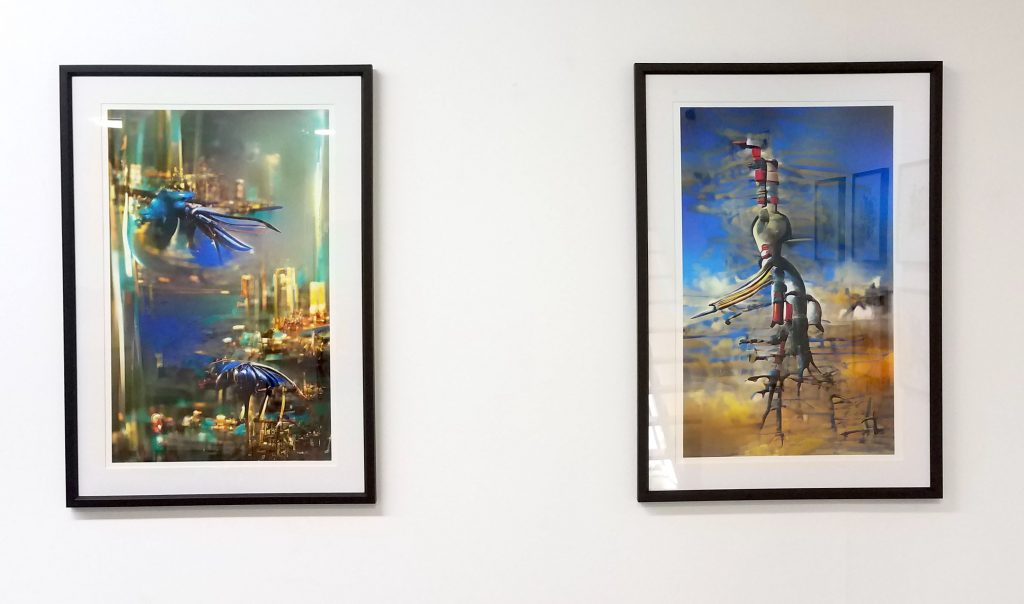

The images were selected from the Sacs, Membranes, Motors, and Vesicles series, as well as The Immaculate Organicism series. These works serve as the foundation for AI-driven transformations, fed into artificial intelligence and vision systems that utilize learning algorithms and generative adversarial networks (GANs). Through this process, the AI analyzes, reinterprets, and evolves the original compositions, generating new visual forms that emerge from the interplay between human intention and machine intelligence.
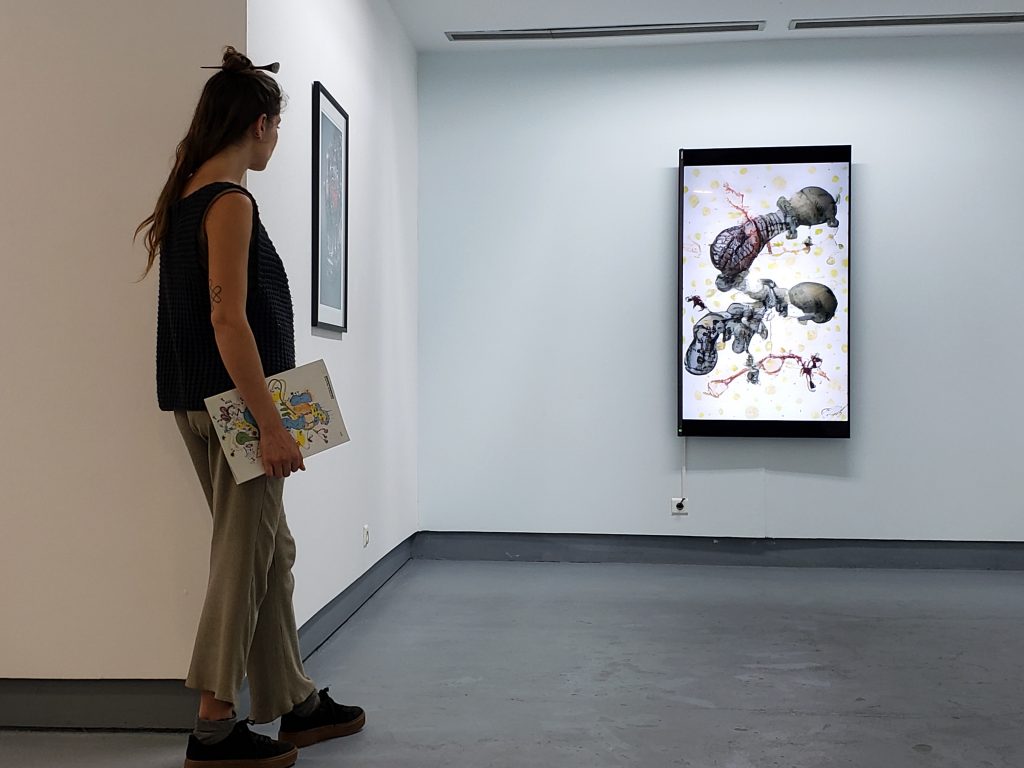
The fusion of microbial world drawings, machine diagrams, and biomorphic remixes—combined with the AI systems’ learning algorithms and keyword-driven inputs—resulted in dynamic explorations of color, composition, and form. This process not only generated new visual iterations but also gave rise to an evolved human-machine aesthetic, where organic and mechanical elements seamlessly intersect in a continuously shifting dialogue of creativity.

As artificial intelligence (AI) increasingly shapes visual culture, we are witnessing the rise of authentic synthetic aesthetics—an entirely new creative paradigm. The integration of big data, vision systems, and advanced image analysis with AI has reached a level where artistic styles can be replicated with such precision that even experts can be deceived. This challenges our fundamental understanding of creativity, blurring the lines between human intention and machine-generated expression, and compelling us to reconsider what it truly means to create.
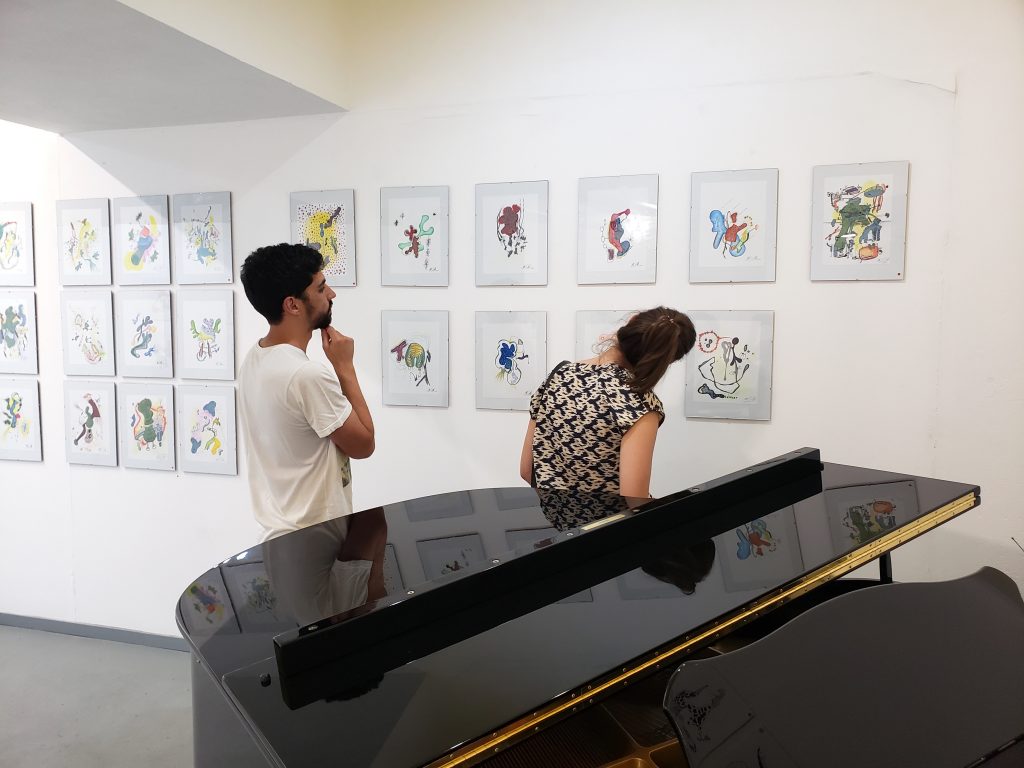
Part of the exhibition also features AI-generated images created through text-based prompts, which pull from vast databases of images across the World Wide Web. By using carefully selected words as input, the AI synthesizes new compositions, blending elements from diverse visual sources to generate unique, algorithmically crafted works. This process highlights the intersection of language, data, and machine creativity, further expanding the dialogue on the role of AI in contemporary artistic expression.
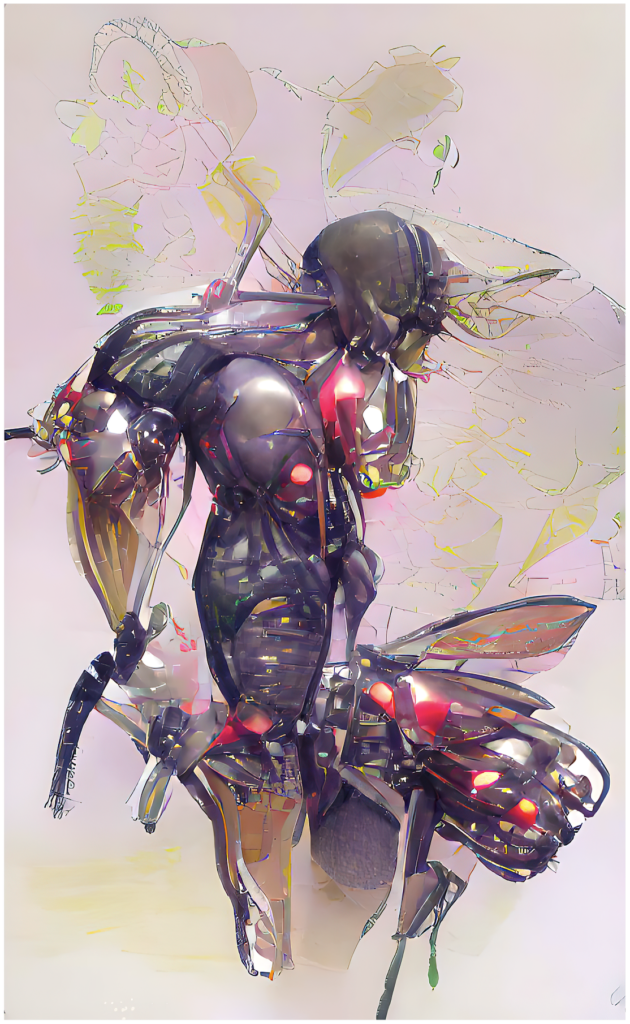
These images are fed into the system, where AI algorithms process and synthesize them into cohesive visual compositions. The AI works to resolve the complex collages generated from the multitude of words and phrases, interpreting and merging disparate elements into new, algorithmically structured forms. This process transforms linguistic input into dynamic visual outputs, further exploring the relationship between text, data, and machine-driven creativity.
Hundreds of images are rendered before carefully selecting just one or two that best align with the artistic vision. Once generated, I revisit these renders, refining them by enhancing color, adjusting lines, and redefining forms. This final stage of intervention bridges human intuition with machine generation, allowing for a deeper synthesis between AI-driven creation and personal artistic expression.
Just as biological species have evolved over time, so too have algorithmic species emerged, shaped by data, computation, and machine learning. The vast accessibility of knowledge at our fingertips has fundamentally transformed how we imagine and create, dissolving traditional boundaries between individual and collective intelligence. In this new paradigm, human creativity is no longer an isolated act but part of an emergent cognition—one that draws from the immense web of interconnected knowledge while still being guided by human notions of aesthetics, intuition, and meaning.
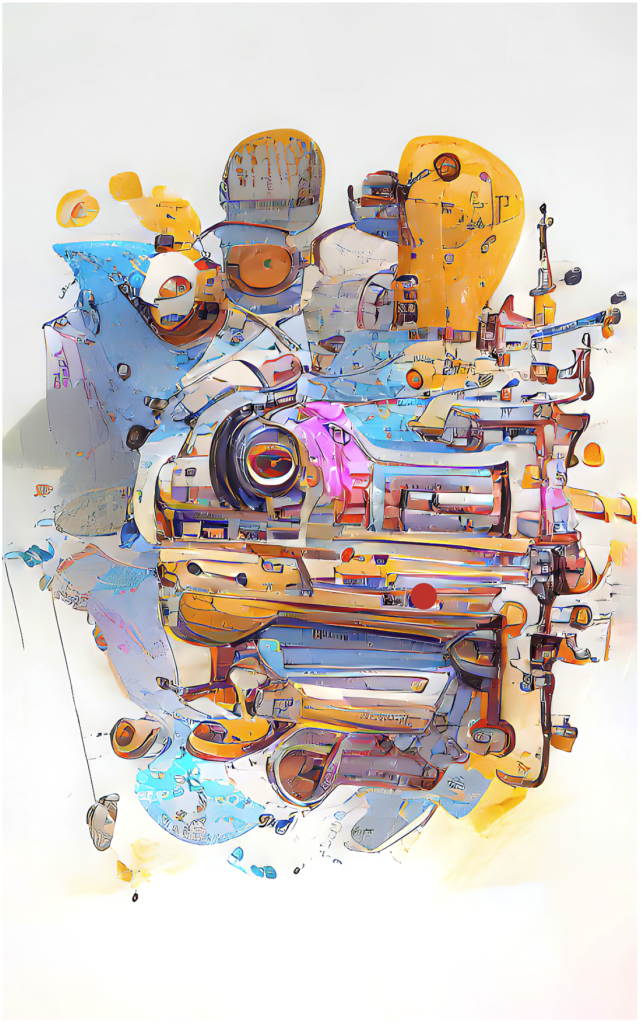
With machine learning, computers are approaching the threshold of exhibiting evolutionary survival instincts and the development of emergent, self-aware software agents. These systems continuously adapt, optimize, and refine their responses based on vast datasets, mimicking the principles of natural selection in digital form. As AI models grow increasingly autonomous, they hint at the potential for machine-driven evolution—raising profound questions about intelligence, agency, and the future of artificial cognition.
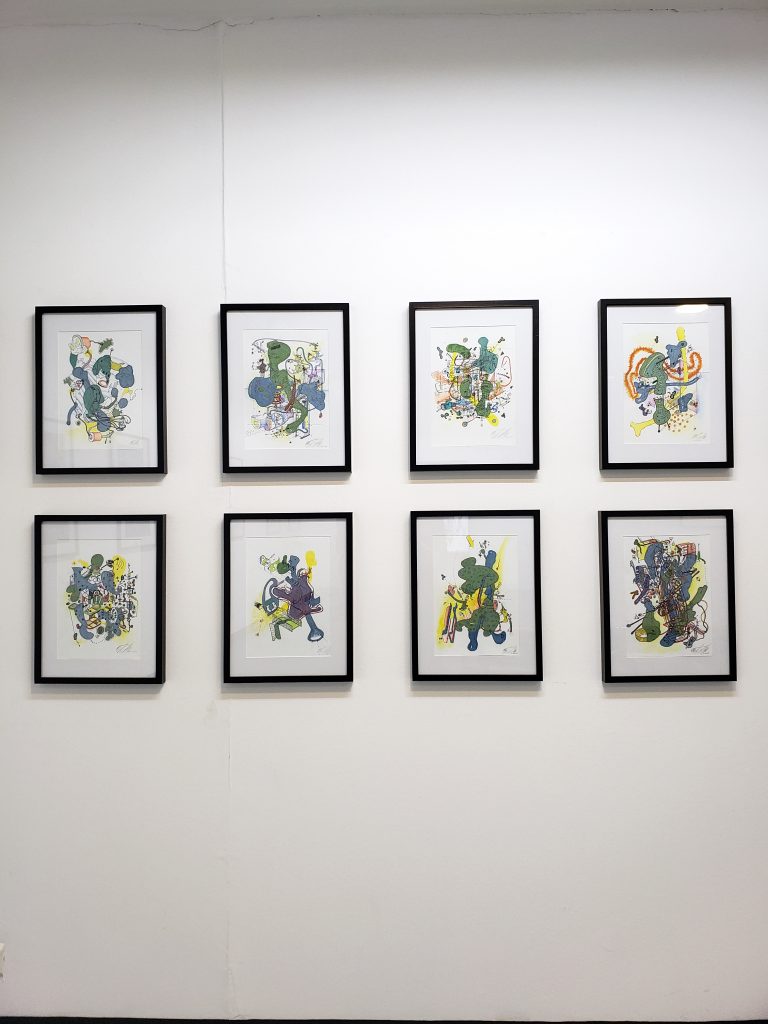
Epistemology has always been shaped by the lenses through which we perceive reality. When lenses were purely analog, crafted from glass, they profoundly altered our worldviews, expanding our ability to see and understand the universe. Today, while physical lenses remain, they are increasingly supplemented—or even supplanted—by silicon, algorithms, and artificial intelligence. Databases and computational models now function as new epistemic lenses, reshaping not just how we see but how we process, interpret, and construct knowledge itself.

Data-driven, algorithmic ways of knowing are rapidly becoming the dominant mode of understanding and interpreting the world. As artificial intelligence and machine learning systems process vast amounts of information at unprecedented speeds, they increasingly shape decision-making, creativity, and even perception itself. This shift challenges traditional human-centered epistemologies, raising critical questions about the role of intuition, subjectivity, and meaning in an era where knowledge is increasingly mediated by algorithms.
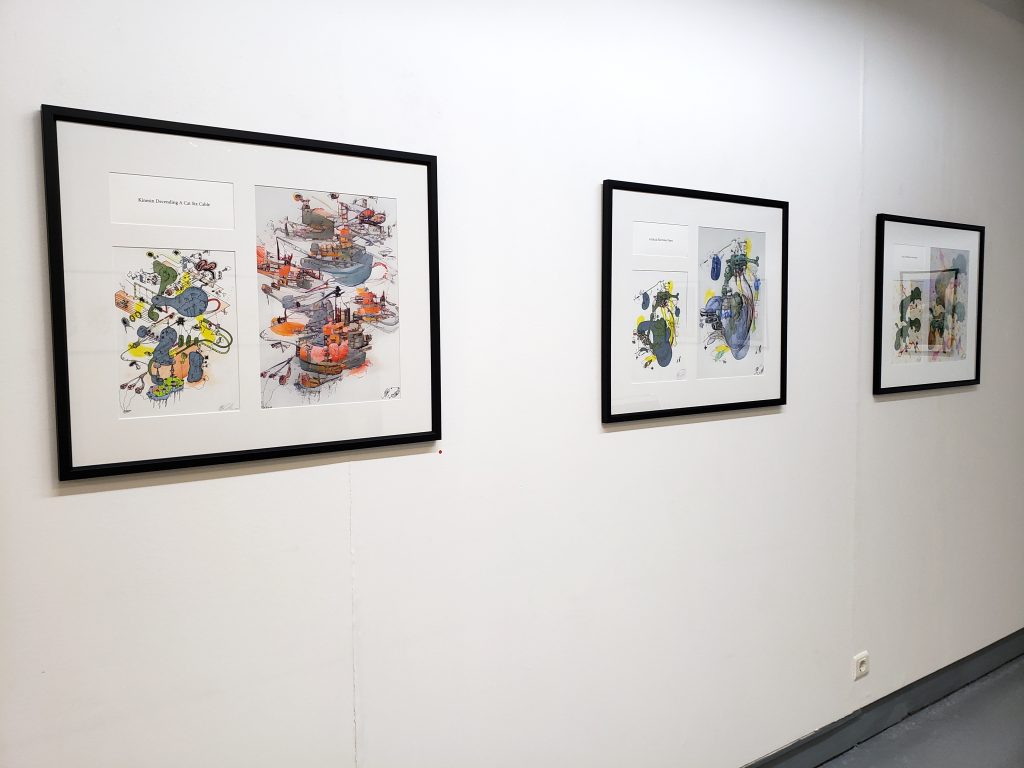
Digital visualization and fabrication technologies are increasingly replacing the direct touch of the artist, transforming the creative process. The computer has become an ideational amplifier, extending artistic capabilities beyond traditional mediums. When combined with biological advancements like CRISPR-Cas9, these technologies open the door to the emergence of semi-living, constructed species—hybrids of the organic and the synthetic that challenge conventional distinctions between life and machine.
As a species, we are becoming more deeply intertwined with technology than ever before. In this age of computer-based art forms, the boundary between human and machine is dissolving, fostering an unprecedented level of intimacy between biological creativity and digital evolution.
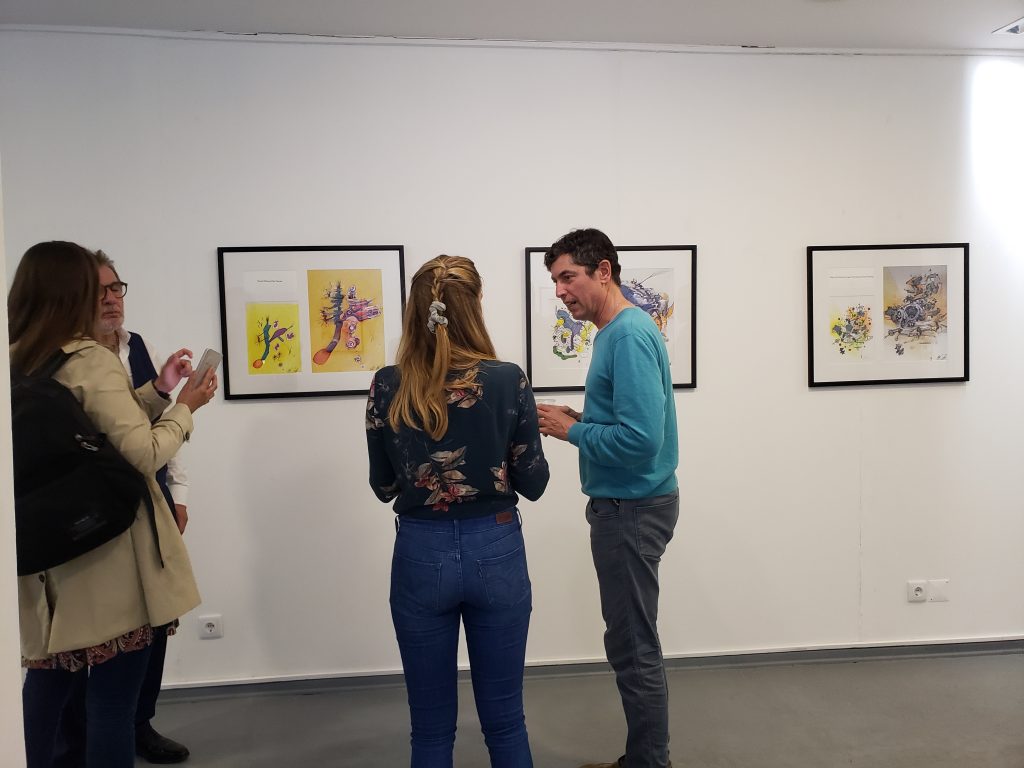
We now experience nature primarily through the lens of our screens—phones, tablets, and smart TVs—where the natural world is replicated as images and videos, filtered through digital interfaces rather than direct experience. Our connection to nature has become increasingly mediated, transforming it into a spectacle consumed within the confines of technology.
At the same time, human data is constantly seeded, collected, and commodified, feeding into vast algorithmic systems that shape everything from online interactions to artistic creation. In this landscape, human-machine symbionts have fully emerged, blurring the boundaries between organic intuition and computational logic. This fusion is not only redefining artmaking but also actively influencing the trajectory of visual culture, altering how we create, perceive, and engage with the world around us.
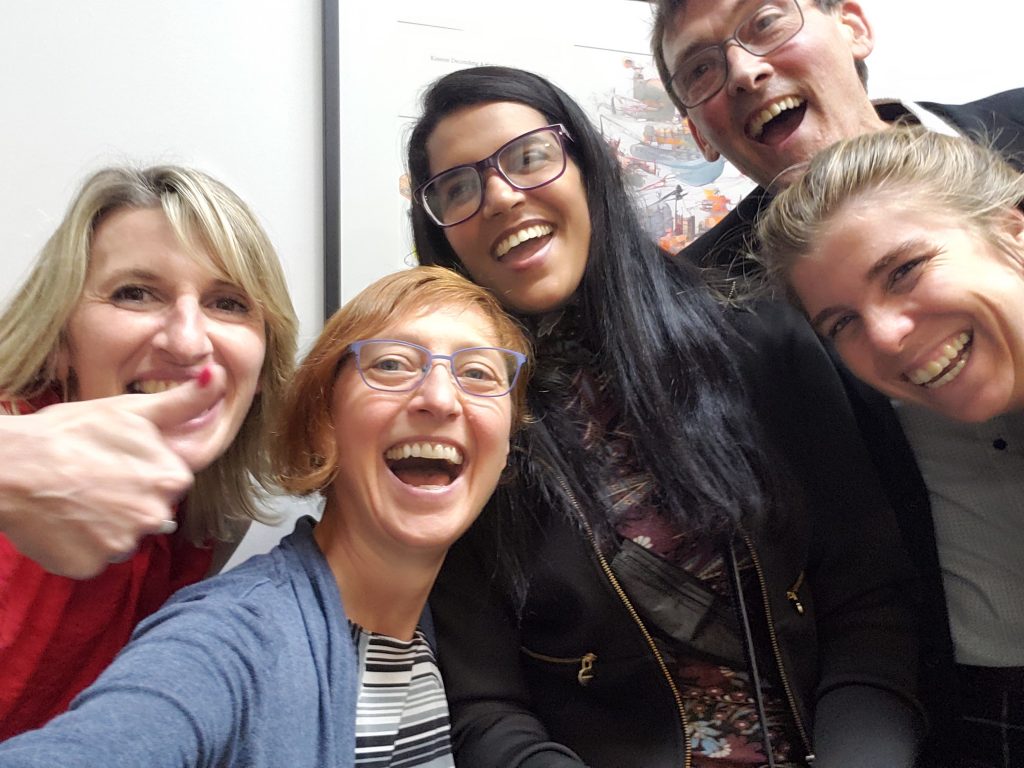
This exhibition examines the intersections and divergences between natural and synthetic methods of artistic evolution, questioning the reciprocal relationship between human creativity and machine intelligence. It asks what the machine may learn from us and, conversely, what we may learn from the machine, through the artificial perceptions, replications, and transformations generated by algorithms.
As computer cognition emerges, these systems not only reinterpret artistic processes but also challenge our understanding of perception, originality, and the very nature of creative thought.
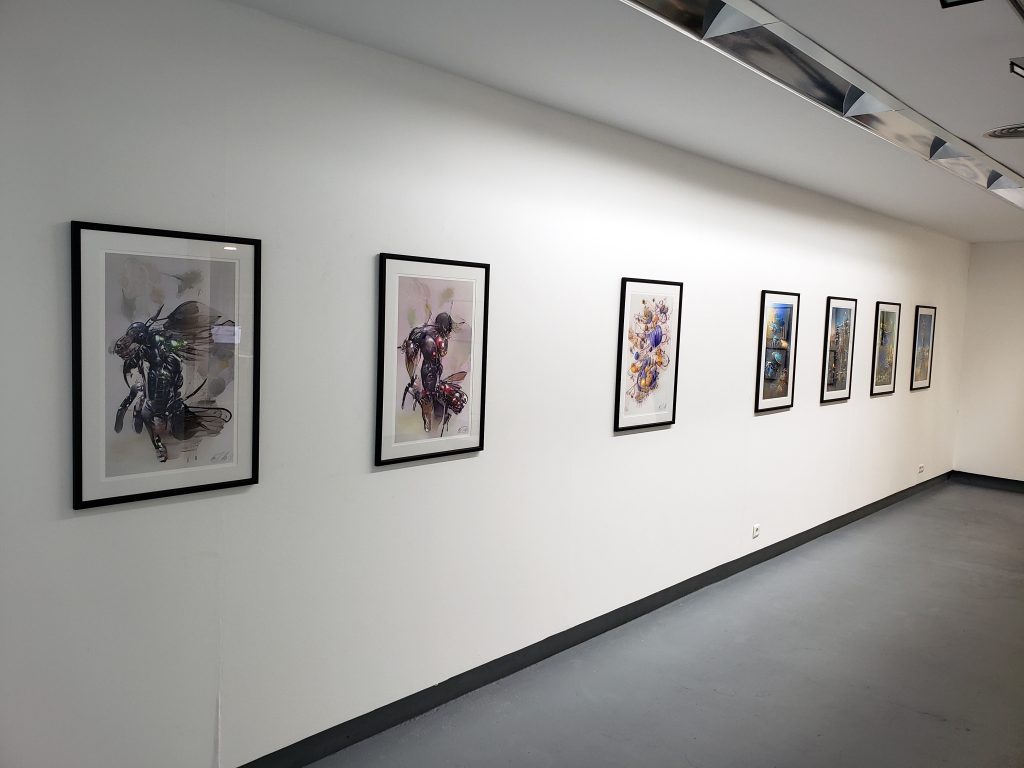
Another key element of this exhibition is a pair of edited video reels featuring artificially composed sound, offering a glimpse into the computer’s evolving creative process. These videos document the AI’s attempts to learn, adapt, and refine its outputs, showcasing the machine’s struggle to interpret and resolve the final images. As the algorithm works to match the artist’s forms, lines, and colors, it generates a dynamic, ever-shifting visual dialogue—revealing both the limitations and possibilities of machine-assisted creativity.

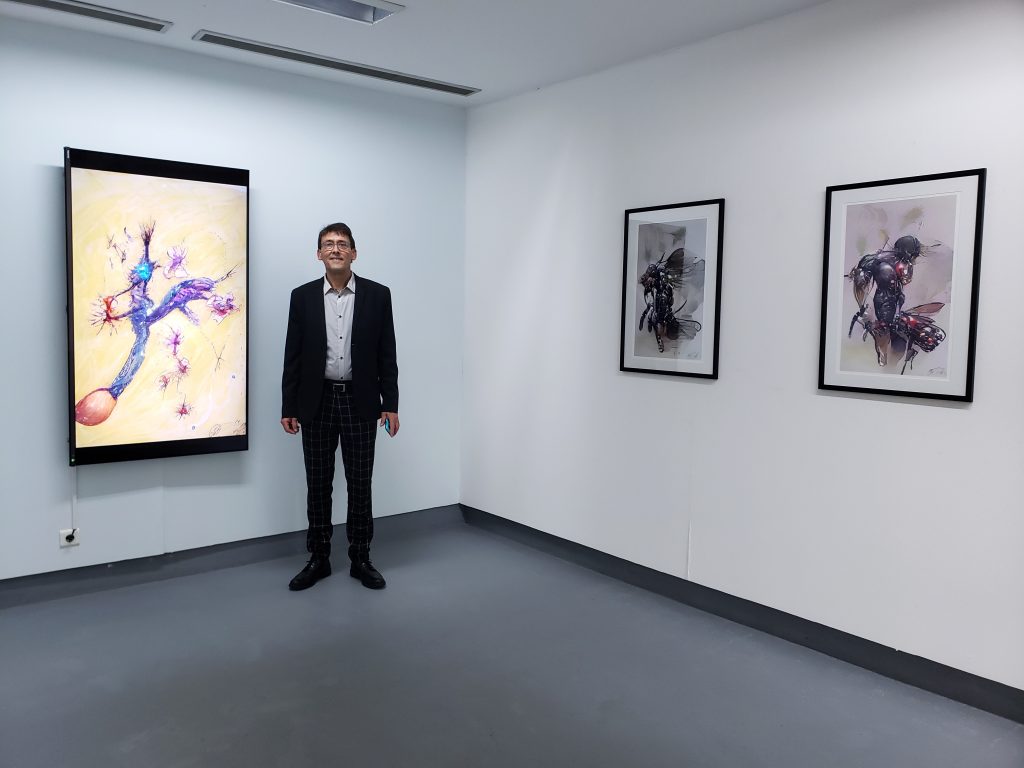
Exhibitions
UGO CARA MUSEUM OF MODERN ART Muggia, Italy, Sept, 21 2023
ROBOTICS; ARTE E ROBOTICA invites the Italian premiere of the Synthetic Evolution prints and videos new renditions and world wide premiere of the Anthropogenic Slot Machine and curated by Maria Campetelli.
FORT HAYES GALLERY Columbus, Ohio, US – March 13-April 22 2023
Flow: visual interpretations on the theme of water invites Synthetic Evolution AI prints and video, curated by Teresa Weidenbusch
UNIVERSITY OF YORK York, England, 14-16 December 2022
Artist residency at the Leverhulme Centre for Anthropocene Biodiversity, showing Synthetic Evolution works curated and invited by Dr. Sarah Bezan and Dr. Peter Sands.
SYRACUSE UNIVERSITY Syracuse, New York, Nov 2022
Bio-Art Mixer presentation of my work and exhibition of three works and videos in the faculty gallery, invited by Professor Boryanna Rossa
THE FESTIVAL OF UNCONVENTIONAL COMPUTING, PROTO-COGNITION, AND SOUND Bristol, UK, Sept-Oct 2022
Artworks at the edge of arts, science, philosophy, and engineering invite four works from Synthetic Evolution and videos curated by Irina Pretrova and organized by director Professor Adam Adamanzky.
FIG BILBAO Bilbao, Spain, November 2022
Centro Portuguese de Serigraphia exhibits the Synthetic Evolution works + the premiere of four new AI works invited by Joao Prates.
ANTONIO PRATES GALLERY Lisbon, Portugal, June 2022-September 15, 2022
A one-person exhibition of Synthetic Evolution inspired by the intertwining of human and machine interactions. Invited by Antonio Prates in collaboration with Centro Portuguese de Serigraphia and Joao Prates.
